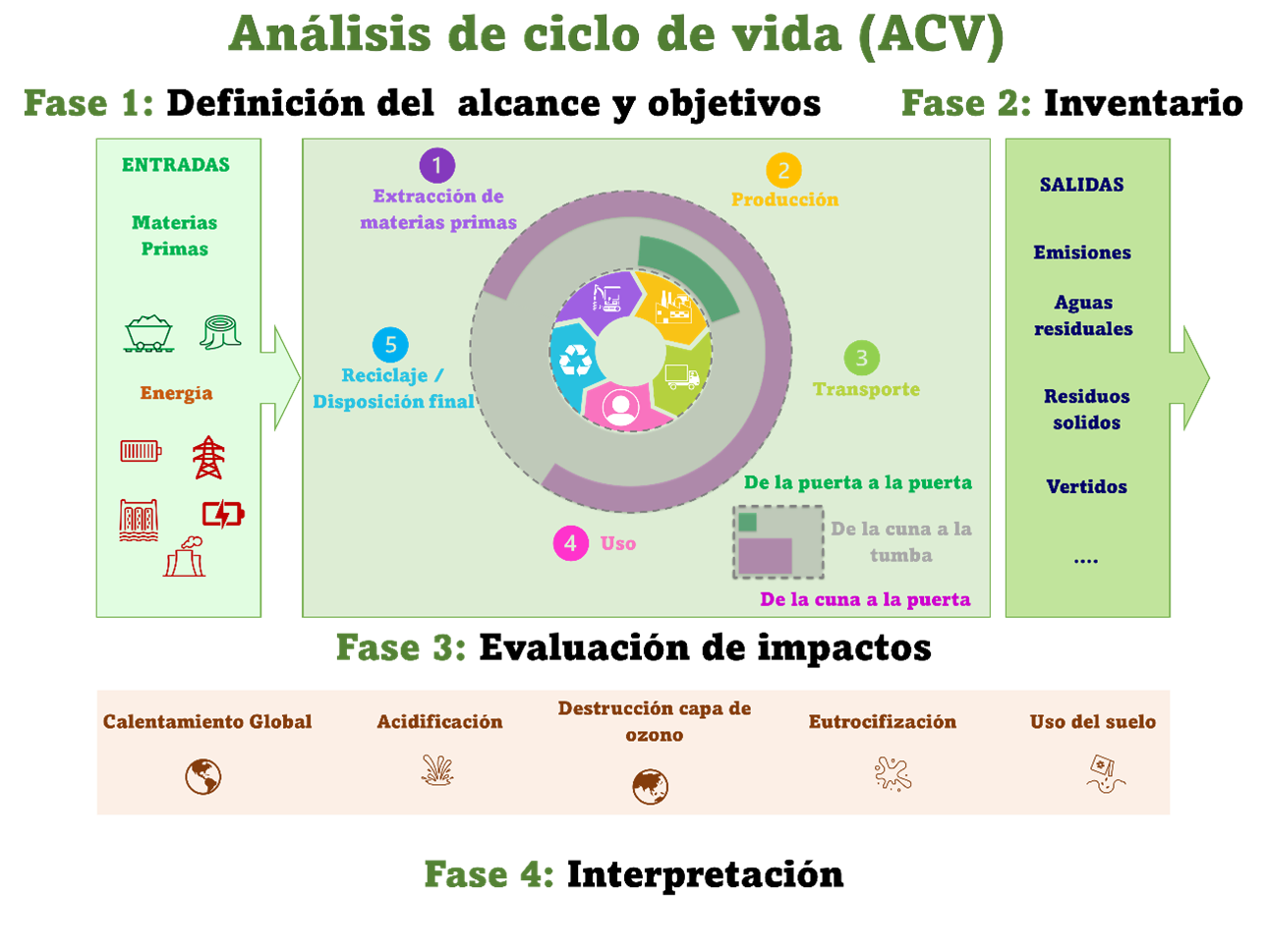Writing / Irene Vega
Scientists from the Chemical and Environmental Engineering Group, thanks to funding from the Bio Based Industries Joint Undertaking (JU), have carried out a bibliographical review on the state of the art of Life Cycle Analysis (LCA) in biomass utilization processes with the aim of minimizing existing methodological differences. This contribution is of vital importance, since it enables the study framework to compare the great variety of processes that contribute to the circular bioeconomy, which use residual biobased molecules as raw materials.
LCA is a tool that records environmental impacts throughout the entire life cycle of a product, process or activity as if it were environmental accounting. "The integration of LCA is increasingly common during the design phase of these processes, which makes a correct application of the technique critical, since the various modeling options can lead to very different results," explain the authors of the paper. study published in the magazine Journal of Cleaning Production.
This work includes the review of a total of 64 scientific articles. Through this, a significant benefit is expected from the analysis and optimization of the sustainability of future technologies. "This study contributes to the design of processes that manage to close the life cycle of products, reusing, repairing and recycling resources of biological origin, integrating technological advances from different fields and, therefore, aligning themselves with the objectives of sustainable development", the researchers point out.
Do more and better with fewer resources
Sustainable Development Goal 12 (one of the 17 goals of the United Nations 2030 Agenda) seeks to “Guarantee sustainable consumption and production patterns”. In this sense, all human actions have an impact on the economy, the environment and social development.
At present, there are numerous research groups that are working to achieve this goal. To do this, they develop processes within the circular bioeconomy, an economic model that seeks the sustainable use of biomass as a source of energy and new materials, replacing products of fossil origin and reducing waste.
As the researchers point out, “when we act sustainably, we ensure that our activities adapt to the capacity of the planet and we respect the rights of future generations. The keys to this can be summed up in doing more and better with fewer resources. To understand it better, we need to analyze how our economic growth is related to the increasing use of resources and the degradation of the environment”.
Fortunately, there are simple actions that we can all take in our daily lives to contribute to this positive change, such as buying local and seasonal products, opting for public transport or cycling instead of the car, and saving energy at home or at work with small changes: turning off unnecessary lights or using efficient appliances. In addition, other gestures such as turning off the tap while brushing your teeth can considerably reduce water consumption.
Regarding the recycling and reuse of materials, there are multiple ideas to transform obsolete objects into new useful things. can also be choose products with recyclable or biodegradable packaging to reduce environmental impact and contribute to the circular economy.
The Life Cycle Analysis
One of the challenges facing the scientific community is finding tools that map the sustainability of new processes from the earliest phases of product design.
One of the most used is the Life Cycle Analysis (LCA), which conforms to a protocol established in the regulations of the International Standards Organization (ISO). The methodology is divided into four phases: study objectives and scope, inventory analysis, impact analysis, and interpretation. "Initially, it is necessary to define the scope of the analysis, which can range from the extraction of raw materials to the production phase (from cradle to gate) or additionally include the use and end-of-life phases (from cradle to grave)," the researchers explain.
According to this methodology, all studies must conform to this protocol and evaluate, during all these phases, the environmental impact generated on the environment, which allows determining which stages and processes are responsible for the main environmental loads.




